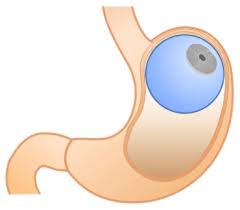Introduction
When considering non-surgical weight loss options, gastric balloons have become increasingly popular due to their effectiveness and minimal invasiveness. These balloons are designed to occupy space in the stomach, reducing the amount of food it can hold and thus promoting weight loss. However, one concern that may arise is what happens if the gastric balloon deflates prematurely or unexpectedly. In this article, we will explore the various aspects surrounding gastric balloon deflation, including causes, signs and symptoms, immediate actions to take, medical interventions, diet and lifestyle changes, long-term implications, and the psychological impact on patients.
Understanding Gastric Balloons
Gastric balloons are temporary devices made of soft, durable silicone. They are inserted into the stomach through a minimally invasive endoscopic procedure. Once in place, the balloon is filled with a sterile saline solution or gas to occupy a significant portion of the stomach, leading to a feeling of fullness and reduced appetite. This aids individuals in achieving weight loss goals, particularly when combined with a comprehensive weight management program.

How Gastric Balloons Work
Gastric balloons work by reducing the stomach's capacity to hold food, creating a sensation of fullness even with smaller meals. The presence of the balloon triggers physiological and hormonal changes that help control hunger and increase satiety. With the reduced caloric intake, individuals can lose weight gradually and sustainably.
Potential Causes of Gastric Balloon Deflation
Although gastric balloons are designed to be durable and reliable, there are instances where deflation may occur. Some potential causes include:
- Damage to the balloon material due to sharp objects or excessive pressure within the stomach.
- Punctures or leaks caused by erosion from gastric acids or prolonged exposure to bile.
- Mechanical failure of the balloon due to manufacturing defects or aging.
Signs and Symptoms of Gastric Balloon Deflation
Detecting gastric balloon deflation can be crucial for timely intervention. The signs and symptoms may vary but can include:
- Sudden increase in hunger or appetite.
- Return of normal stomach capacity.
- Weight regain or plateau in weight loss progress.
- Reduced feelings of fullness after meals.
- Changes in bowel movements.
Risks and Complications
Gastric balloon deflation poses certain risks and complications that need to be addressed promptly. These may include:
- Malnutrition and nutrient deficiencies due to increased food intake.
- Digestive system complications such as gastric ulcers or intestinal obstruction.
- Acid reflux and heartburn caused by increased stomach acid production.
- Psychological distress and emotional setbacks associated with weight regain.
Immediate Actions to Take
If you suspect your gastric balloon has deflated, it is important to take immediate action. Contact your healthcare provider or the medical professional who performed the procedure. They will guide you on the necessary steps to ensure your well-being and determine the appropriate course of action.
Medical Intervention and Treatment Options
Depending on the situation, medical intervention may be required to address gastric balloon deflation. The treatment options may include:
Gastric balloon removal:
If the deflation is confirmed and the balloon is no longer effective, it may need to be removed. This can be done through an endoscopic procedure similar to the initial insertion. The deflated balloon is gently extracted from the stomach.
Evaluation and assessment:
After the balloon removal, your healthcare provider will evaluate the situation to determine the cause of deflation. This may involve further tests and examinations to identify any underlying issues or complications.
Reinsertion of Gastric Balloon
In some cases, after the deflation is addressed and the underlying cause is identified, it may be possible to consider reinsertion of the gastric balloon. This decision is made based on individual circumstances and consultation with healthcare professionals. Reinsertion can provide an opportunity to continue the weight loss journey if deemed appropriate.
Post-Deflation Diet and Lifestyle Changes
After experiencing gastric balloon deflation, it's crucial to revisit your diet and lifestyle habits. Your healthcare provider or a registered dietitian can guide you on making appropriate adjustments to prevent weight regain and support your weight loss efforts. This may include:
- Following a balanced and nutritious meal plan tailored to your specific needs.
- Incorporating regular physical activity into your routine.
- Maintaining regular follow-ups with your healthcare team to monitor progress and make necessary adjustments.
Long-Term Implications
Experiencing gastric balloon deflation may have long-term implications for your weight loss journey. It's important to understand that the effectiveness of the gastric balloon in achieving weight loss may be compromised after deflation. Therefore, individuals should be prepared for potential weight regain and consider alternative weight management strategies if necessary.
Psychological and Emotional Considerations
Weight loss journeys can have a significant psychological and emotional impact on individuals. Experiencing gastric balloon deflation may bring about feelings of disappointment, frustration, and concern. It's crucial to address these emotions and seek support from healthcare professionals, support groups, or therapists specializing in weight management. They can provide guidance and strategies to navigate these challenges effectively.
Patient Experiences and Testimonials
Many individuals have successfully undergone gastric balloon procedures and achieved their weight loss goals. While gastric balloon deflation is a potential complication, it's important to note that it doesn't occur frequently. Patient experiences and testimonials can offer insights into the overall effectiveness and satisfaction associated with gastric balloon procedures.
Conclusion!
Gastric balloon deflation, though not common, can occur and disrupt the weight loss journey for individuals who have undergone this procedure. It is essential to be aware of the potential causes, signs, and symptoms, as well as the appropriate actions to take. Seeking immediate medical attention and engaging in post-deflation adjustments, including diet and lifestyle changes, can help individuals regain control of their weight management goals. Remember to seek support and guidance from healthcare professionals to navigate the physical, psychological, and emotional aspects associated with gastric balloon deflation.


No comments yet